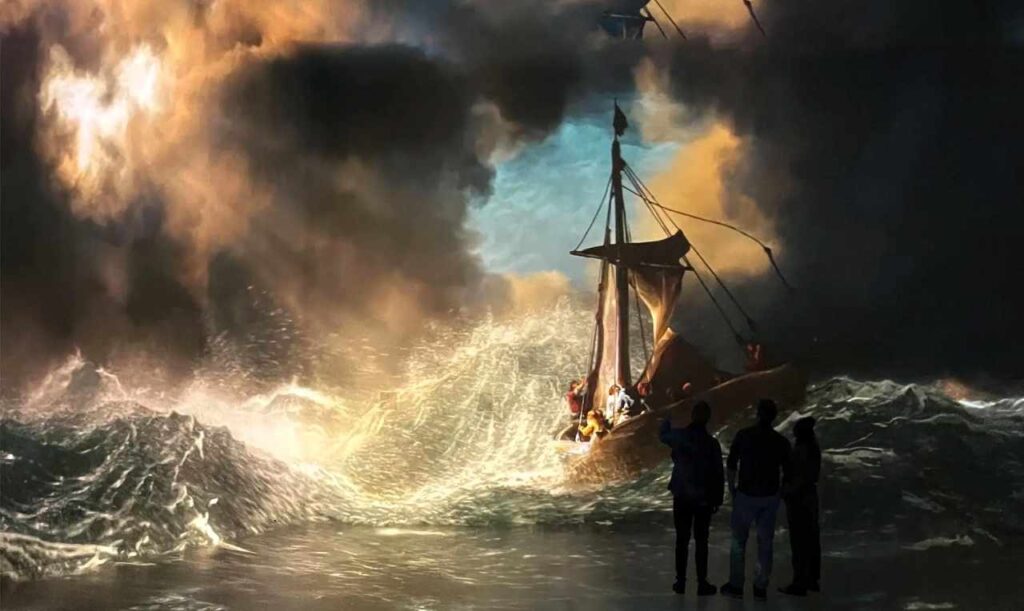Christ in the Storm on the Sea of Galilee is a 1633 oil-on-canvas painting by the Dutch Golden Age painter Rembrandt van Rijn. It is classified as a history painting and is among the largest and earliest of Rembrandt’s works.
Isabella Stewart Museum
It was purchased by Bernard Berenson for Isabella Stewart Gardner in 1869 and was displayed at the Isabella Stewart Gardner Museum in Boston before its theft in 1990; it remains missing.
The painting depicts the biblical event in which Jesus calmed the storm on the Sea of Galilee, as is described in the fourth chapter of the Gospel of Mark It is Rembrandt’s only seascape.
A self-portrait of the artist.
The painting, in vertical format, shows a close-up view of Christ’s disciples struggling frantically against the heavy storm to regain control of their fishing boat.
A huge wave beats the bow and rips the sail. One of the disciples is seen vomiting over the side. Another one, looking directly at the viewer, is a self-portrait of the artist. Only Christ, depicted on the right, remains calm

A style of stark contrasts
Rembrandt employed tenebrism (a style of dramatic illustration with stark contrasts of light and dark), as a way to emphasize visually Christ’s miracle in calming the sea. Light emanates from the upper left of the painting, and a glimpse of the blue sky may be seen through the storm. As the scene moves toward the right, the boat and the crew are thrown back into shadow.

Three hundred etchings
Rembrandt Harmenszoon van Rijn 15 July 1606– 4 October 1669), usually simply known as Rembrandt, was a Dutch Golden Age painter, print maker, and draughtsman. He is generally considered one of the greatest visual artists in the history of art It is estimated Rembrandt produced a total of about three hundred paintings, three hundred etchings, and two thousand drawings.
International fame
Rembrandt quickly achieved renown among Dutch art lovers and an art-buying public for his history paintings and etchings, as well as his portraits and self-portraits. His unusual etchings brought him international fame during his lifetime, and his drawings, which in fact were done as practice exercises or as studies for other works, were also collected by contemporary art lovers.




